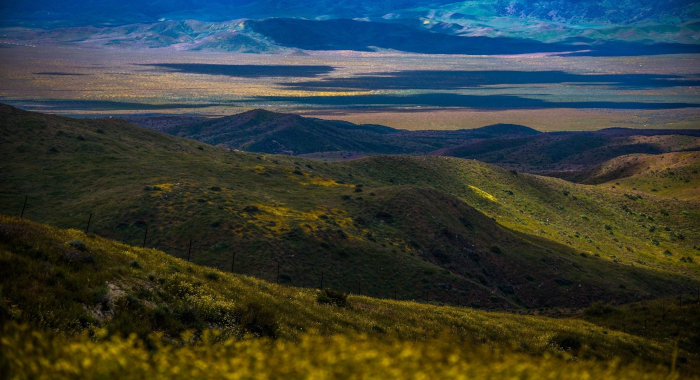There are many and increasing threats to biodiversity. To protect the plants and animals that share our world, we need to understand what they need to survive – and ideally, thrive – in a warming, more crowded world. And we need to better understand how meeting those needs can align with other societal values.
To do that, our scientists conduct ecological research to elucidate conservation problems, test hypotheses and solutions, and monitor results. We collaborate with the scientific community to inform and review our work, and share our findings with scientists and conservation practitioners around the world.


Nisi A, H Welch, S Brodie, C Liephardt, R Rhodes, E Hazen, JV Redfern, TA Branch, A S Barreto, J Calambokidis, T Clavelle, L Dares, A de Vos, S Gero, J A. Jackson, RD Kenney, D Kroodsma, R Leaper, DJ McCauley, SE Moore, E Ovsyanikova, S Panigada, CV Robinson, T White, JR Wilson, B Abrahms
Collisions between whales and ships are a leading cause of death for threatened whale species across the globe. In this paper, scientists identified high risk areas for whale-ship collisions by…The Nature Conservancy
In 2013, sea star wasting disease led to the collapse of sunflower sea stars (Pycnopodia helianthoides) along the west coast of North America. Animals are now being grown in captivity for eventual…Michael J Clifford, Peter Gower, Tanya Anderson, Jaina Moan, Mickey Hazelwood, Sophie S Parker, Laurel Saito
Dramatic changes to the transportation and energy sectors are required to reduce greenhouse gas emissions and meet the goal of keeping global average temperatures from rising. The authors discuss how…Carrie A. Schloss, D. Richard Cameron, Bradley Franklin, Christoph Nolte, Scott A. Morrison
In response to biodiversity declines worldwide, over 190 nations committed to protect 30% of their lands and waters by 2030 . As these jurisdictions move from planning to implementation, we propose a…William T. Bean, H. Scott Butterfield, Jeanette K. Howard, Thomas J. Batter
In this paper, the authors used a variety of habitat suitability modeling approaches to begin to understand where pronghorn may exist in the future in California under different climate change…Lucy Genua, Brad Anderson, Meghan Bowen, Genelle Ives, Owen Liu, Thomas Paschos, H. Scott Butterfield, Kelly Easterday, Mark Reynolds, James H. Thorne
In this paper, the authors used historical vegetation data, from both aerial photographs and field transects, to assess the change in major vegetation types at the Dangermond Preserve over the last…Kate Kauer, Lyall Bellquist, Jenn Humberstone, Vienna Saccomanno, Dwayne Oberhoff, Sherry Flumerfelt, Mary Gleason
This 2024 paper by TNC staff and partners represents the first U.S.-wide synthesis of fisheries trusts – which are community-based entities that acquire and manage fishery privileges with the…Michael J. Clifford, Sophie S. Parker, Laurel Saito, Brian S. Cohen, Naomi S. Fraga
Lithium batteries are important for the clean energy transition in the United States because they are used in electric vehicles and for grid power storage. However, lithium extraction may have impacts…Nicholas A. Povak, Patricia N. Manley, Kristen N. Wilson
This study presents a methodology to integrate spatial assessments of current and future forest conditions to understand the potential to achieve desired conditions under climate change with ongoing…Claire L. Schollaert, Jihoon Jung, Joseph Wilkins, Ernesto Alvarado, Jill Baumgartner, Julien Brun, Tania Busch Isaksen, Jamie M. Lydersen, Miriam E. Marlier, Julian D. Marshall, Yuta J. Masuda, Charles Maxwell, Christopher W. Tessum, Kristen N. Wilson, Nicholas H. Wolff, June T. Spector
By modeling six scenarios of forest management, wildfire, and health impacts from smoke from 1981-2020, we found that moderate amounts of prescribed fire can decrease harmful particulate matter…William T. Bean, H. Scott Butterfield, Craig Fiehler, David Hacker, Jeanette K. Howard, Russell Namitz, Brandon Swanson, Thomas J. Batter
TNC launched a Water for Wildlife project motivated by understanding the importance of standing free water across the season for wildlife in general, but most importantly for those species sensitive…Michael J. Clifford, Sophie S. Parker, Brian S. Cohen, Elaine York, Joel Tuhy
This paper provides an assessment of changes in the conservation value of lands in the Mojave Desert of Nevada and Utah resulting from renewable energy and other development between 2010 and 2018. The…Trish Smith, Cheryl Brehme, Jill Carpenter, Nancy Frost, Megan Jennings, Barbara Kus, Scott Quinnell, Spring Strahm, T. Winston Vickers
The Nature Conservancy and the California Department of Transportation are planning 3 wildlife crossing infrastructure projects along a 3-mile stretch of Interstate 15 (I-15) in the Santa Ana-Palomar…Adam H. Love, Andy Zdon, Naomi S. Fraga, Brian Cohen, Maura Palacios Mejia, Rachel Maxwell, Sophie Parker
This paper presents results from the Mojave Desert Springs research project. The authors present a comprehensive statistical analysis of similarities between California desert springs. An observed…Michele Romolini, Sophie S. Parker, Gregory B. Pauly, Eric M. Wood
This editorial introduces a group of 11 articles published as part of an organized research topic in the Urban Greening section of the journal Frontiers in Sustainable Cities. In contrast with the…Christopher M. Free, Lyall F. Bellquist, Karin A. Forney, Jenn Humberstone, Kate Kauer, Qui Lee, Owen R. Liu, Jameal F. Samhouri, Jono R. Wilson, Darcy Bradley
Dynamic ocean management frameworks can be a useful approach to fisheries management under climate change. In the oceans, marine heatwaves are increasingly common symptoms of climate change that can…